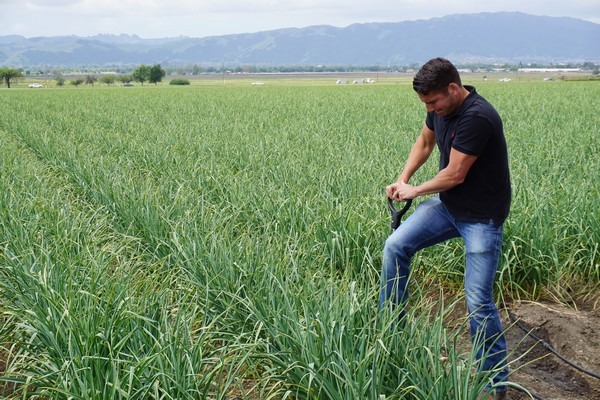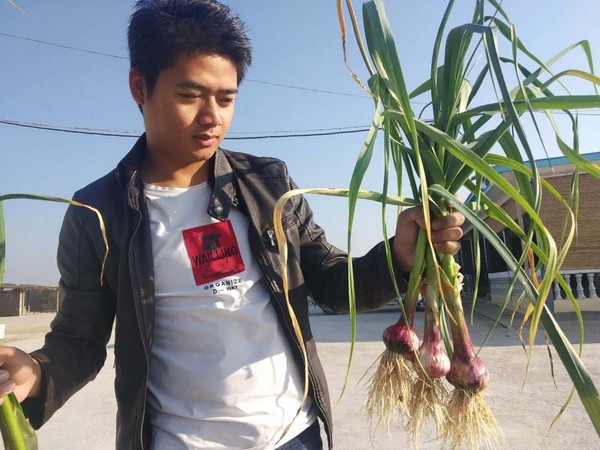“There’s essentially a giant black hole of demand worldwide for garlic that I don’t think can be fulfilled.”
These are the words of Ken Christopher of Christopher Ranch in Gilroy, CA who sees demand for garlic hitting extreme highs. “Over the last four weeks, we’ve seen demand approaching 50, 60 and even 70 percent over the same point last year,” says Christopher. “It’s getting harder and harder to forecast the remainder of the season.”
 Photo: Christopher Ranch
Photo: Christopher Ranch
There are a number of reasons why garlic is in such demand in 2020. In the year of the pandemic, overall sales of produce at the retail level have gone up and particularly so for items with strong health benefits associated—think citrus but also ginger and possibly most predominantly, garlic. “A lot of different states are changing their stay-at-home orders--indoor dining is shutting down and outdoor dining is becoming unfeasible with colder weather nationwide. So we’re going to see another huge surge of people going to their local retailers like we did back in March,” says Christopher, adding that California will likely continue to see a decline in peeled garlic sales which would go towards foodservice use. At the same time, overall, consumers are cooking at home more with key ingredients such as garlic.
Unanticipated demand
Meanwhile, while Christopher notes this year is one of the better California garlic crops Christopher Ranch has seen, it couldn’t plan for the sustained surge in demand linked to COVID-19. “We had been on track to handle a 20-25 percent surge in sales over the course of 12 months,” says Christopher. In fact, he notes at the start of the season in the summer, the company thought there might be a bit of an oversupply. “When things like that happen, we tend to divert those pounds into jarred products—crushed, peeled, chopped garlic--with a longer shelf life,” says Christopher. “But as we approach December, we’re repurposing that garlic that may have gone to jars back to fresh sales.”
 Photo: Ken Christopher of Christopher Ranch
Photo: Ken Christopher of Christopher Ranch
At the same time, there’s also a shift on California garlic supplied for industrial uses such as jarred and canned consumer products. “Those companies are able to take alternative countries who import garlic—so pre-peeled Spanish, Argentinian, Mexican garlic,” says Christopher. “It’s something we don’t normally want to do but this year it’s looking like we’ll have to make that exception for some industrial customers.”
All of this leaves pricing at roughly five to 10 percent higher over last year at this time, though Christopher attributes that largely to COVID-19-related costs, particularly given garlic is a labor-intensive product to harvest. “We’re also trying to offer sustainable pricing for the long-term—we want to provide stability from the U.S. market,” says Christopher.
International competition
Looking ahead worldwide, Christopher notes that garlic is in such demand that while it would normally compete with Chinese garlic right now as well as supplies from Argentina in January and later, Spanish garlic in March-April, it might not happen this year.
 Photo: Canada Garlic Importing
Photo: Canada Garlic Importing
On imported garlic coming into North America, John Wang of Toronto-based Canada Garlic Importing Inc. notes that China also had a larger crop that’s estimated to be approximately 20-25 percent higher than last year due to largely increased plantings.
Canadians (really) love garlic
“And the demand has been crazy for garlic in North America, especially in Canada—Canadians eat much more garlic compared to other countries around the world. Perhaps it’s because we’re a combined nation of immigrants from Asia, Europe, etc.” says Wang. “Demand is approximately double what it is in a regular year because of COVID-19. People are staying home and buying more garlic and ginger to cook with this year.”
 Photo: Canada Garlic Importing
Photo: Canada Garlic Importing
At the same time, he estimates foodservice demand for peeled garlic has dropped by between 80-90 percent. “Going into winter, for the retail side and fresh garlic, demand will remain strong with the holidays coming and foodservice will be quiet,” says Wang. “Even without COVID-19, garlic consumption in the winter compared to the rest of the year, the demand increases normally by approximately 30 percent. But with the lockdowns and people shopping at retail more, we think demand will be double what it will be for a regular year.”
In turn, pricing on garlic is stable says Wang. “Compared to last year, it’s slightly less,” he says. That said, Wang anticipates pricing to rise between now and the end of June by up to 20 percent.
For more information:
Ken Christopher
Christopher Ranch
Tel: +1 (408) 847-1100
[email protected]
www.christopherranch.com
John Wang
Canada Garlic Importing Inc.
Tel: +1 (905) 501-8868
[email protected]
www.garlicgroups.com
